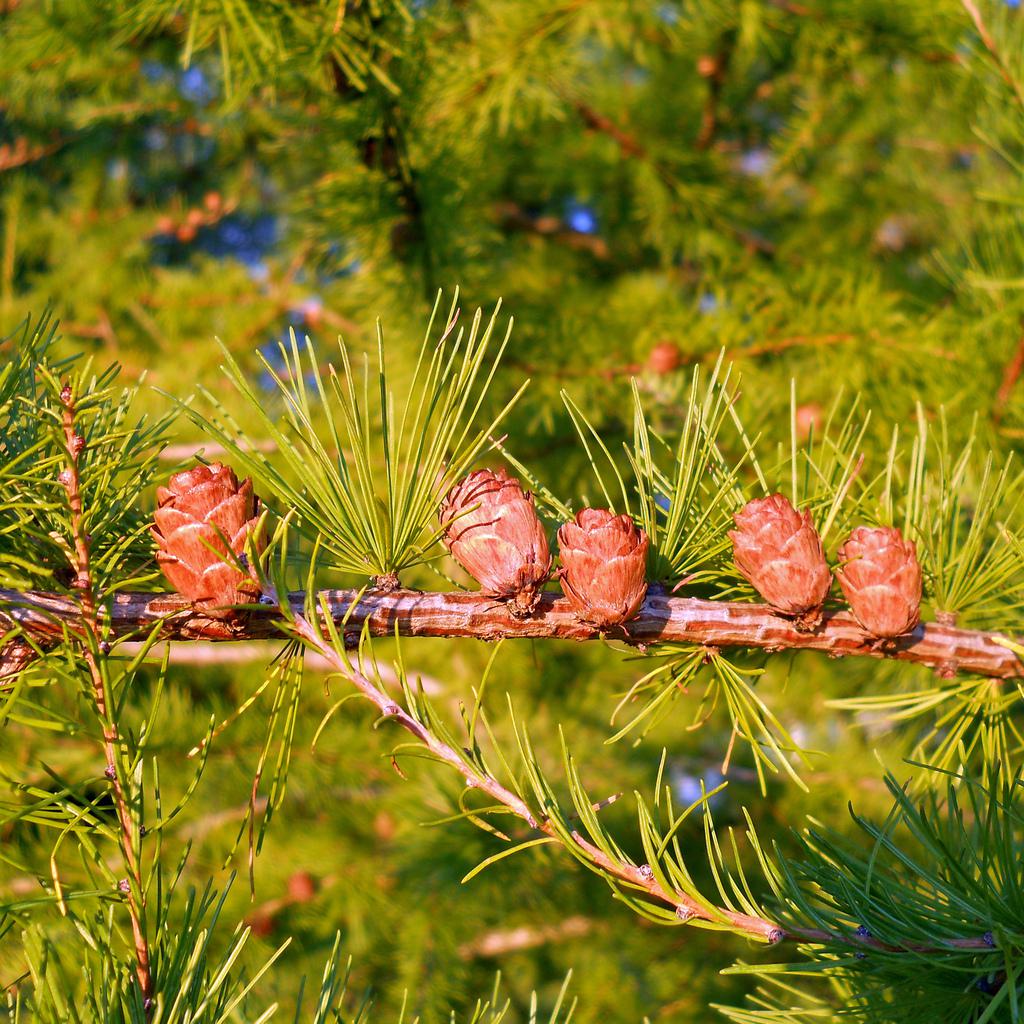Eastern Larch
Tamaracks are found across Canada and in the northeastern United States. Unlike most conifers, their needles turn golden and drop in the fall, growing new greenish-blue needles every spring. The needles are 5-7 in long and grow in clusters of 15-25.
Tamaracks are thin, medium-sized trees (50-65 ft) with reddish-brown bark that becomes scaly as the tree ages. They are often found alongside Black Spruces in bogs or marshes or on cool, moist, north-facing slopes.
Both male and female cones may appear on the same branch. Male cones look like small mounds of yellow or brown pollen sacs. The female cones look like small pine cones. When mature, the female cones are brown, .4-.8 in long, on short curved stalks.
Could it be? Western Larches look much like Tamaracks but are only found in the mountains of the Pacific Northwest and are very tall.
Did you know? Tamaracks can tolerate very cold temperatures and can be found at the edge of the tundra on the Arctic tree line.
See Also: Balsam Fir, Common Juniper, Douglas-fir, Engelmann Spruce, Jack Pine, Lodgepole Pine, Rocky Mountain Juniper, Spruce, Western Hemlock, Western Larch, Western Redcedar, Whitebark Pine







